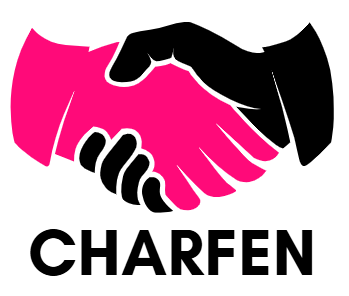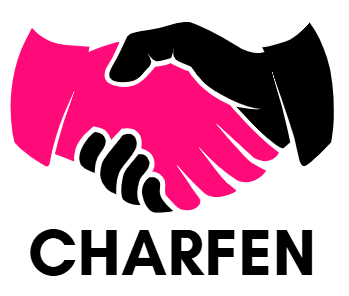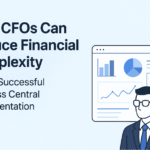Advertisement
In today’s volatile and uncertain business environment, leaders face challenges that don’t have straightforward answers. Market shifts are faster, digital ecosystems are more complex, and customer expectations are constantly evolving. Traditional problem-solving methods, designed for predictable environments, often fail to meet the demands of this new reality.
This is why many organizations are turning to design thinking services. By taking a human-centred and outcome-driven approach, design thinking helps businesses reframe high-stakes challenges and arrive at solutions that are practical, innovative, and sustainable.
To understand why design thinking has become central to modern business strategies, it is helpful to examine its evolving role.
Understanding the Role of Design Thinking in Modern Business
Design thinking is often associated with product design, but its relevance extends far beyond that today. For executives and business owners, it functions as a service model that supports transformation at multiple levels—strategic, operational, and cultural.
Instead of focusing only on end-users, businesses are now adopting stakeholder-centred ecosystems. This means considering the needs of employees, regulators, investors, and even the broader community while designing solutions. By widening the lens, organizations ensure that outcomes are not only customer-friendly but also aligned with long-term business sustainability.
This evolution has helped design thinking mature beyond being a creative buzzword.
Expanding Beyond Innovation Buzzwords
In the early days, design thinking was often viewed as a creative exercise—something teams engaged in during workshops using sticky notes and brainstorming techniques. While useful, those limited applications didn’t always have a direct connection to real business impact.
Today, businesses treat design thinking as a service-led, end-to-end framework. It is embedded in decision-making, project execution, and cultural practices. Organizations that apply it in this way see more consistent results: fewer misaligned projects, faster adaptation to market needs, and a stronger culture of experimentation.
Its maturity becomes clear when we examine the various contexts in which design thinking services deliver measurable value.
Key Dimensions Where Design Thinking Services Bring Value
Businesses are applying design thinking beyond product innovation. The methodology now plays a role in shaping strategy, driving organizational change, and addressing system-level challenges.
Strategic Decision-Making
- Market Entry Strategies: Instead of relying solely on financial modelling, companies use design thinking to explore new market entry scenarios. Prototyping and scenario simulations help test ideas before significant resources are committed.
- New Business Models: Organizations apply rapid prototyping to visualize alternative business models. This reduces uncertainty and helps leadership teams evaluate multiple futures before making investments.
Organizational Change and Culture Building
- Breaking Silos: Design thinking encourages cross-functional collaboration. By involving teams from different departments in problem-solving, organizations reduce duplication and improve alignment.
- Empathy-Driven Leadership: Leaders who adopt design thinking approaches prioritise listening, understanding employee needs, and designing systems that support people more effectively. This results in higher engagement and productivity.
Complex System-Level Challenges
- Sustainability: Businesses are adopting systemic design practices to assess environmental impact and develop operations that mitigate long-term risks.
- Supply Chain Resilience: Mapping interconnected systems allows leaders to identify weak points and design more resilient networks.
- Digital Ethics: With technologies like AI and automation, design thinking helps organizations consider ethical implications and avoid reputational risks.
To deliver results across these contexts, the design thinking process itself has evolved for modern business needs.
The Updated Five-Stage Process of Applying Design Thinking Services
The traditional five stages—empathize, define, ideate, prototype, and test—remain the foundation. However, agencies offering design thinking services have adapted them to fit the realities of 2025, where businesses must balance human insight with data-driven intelligence.
Empathize 2.0: Beyond Customers
- Focus extends beyond customers to include employees, communities, regulators, and partners.
- Insights are enriched through a combination of analytics, interviews, and emotional intelligence tools.
Redefine and Reframe Problems
- Systems mapping uncovers connections and root causes that may not be visible through linear analysis.
- Leaders ask provocative questions such as “What if the opposite were true?” to challenge assumptions and open new perspectives.
Ideate Through Co-Creation
- Human creativity is combined with AI tools to generate a wider range of ideas.
- Cross-industry perspectives bring fresh thinking. For example, a financial services firm may borrow ideas from healthcare or logistics to design better customer experiences.
Prototype Faster, Smarter
- Digital twins and immersive simulations help businesses test models before launching them.
- Prototypes are treated as learning experiments, where inexpensive failures create valuable insights without heavy costs.
Test as Ongoing Validation
- Testing is reframed as a continuous process. Products, strategies, or policies are validated through real-time experiments.
- Success is measured through adaptive KPIs, including both human satisfaction and financial outcomes.
These updated practices make design thinking highly relevant for the new challenges organizations face today.
Modern Challenges Design Thinking Services Address Today
Business leaders today must navigate a complex mix of digital challenges, workforce shifts, and sustainability goals. Design thinking services provide structured approaches to tackle these challenges effectively.
- Hybrid Workforces: By applying design-led facilitation, organizations align decision-making across distributed teams. This ensures that remote and in-office workers operate with clarity and shared purpose.
- Digital Transformation Barriers: Enterprises often struggle when implementing AI, automation, or Web3. Design-first roadmaps keep these transitions human-centred and responsible, avoiding pitfalls of tech-driven change.
- Sustainability and Ethics: Eco-centred systems thinking helps businesses design processes that reduce waste, build ethical product life cycles, and strengthen long-term trust with stakeholders.
The benefits of design thinking are best understood when they are translated into measurable business outcomes.
The Business Impact: Measurable Outcomes of Applying Design Thinking Services
Executives and investors need to see how design thinking translates into value. Its outcomes can be categorized into tangible and intangible benefits.
- Tangible ROI: Reduced time-to-market for new initiatives, improved customer retention, and the ability to scale business models effectively.
- Intangible ROI: Higher employee engagement, stronger innovation culture, and alignment across diverse stakeholder groups.
As businesses look ahead, design thinking is expected to evolve further with the help of AI and new service models.
Future of Design Thinking Services in 2025 and Beyond
The future of design thinking will be defined by AI-augmented creativity and system-level collaboration. Rather than being confined to workshops or projects, design thinking is emerging as an ongoing consulting service. The concept of Design Thinking-as-a-Service (DTaaS) is already taking shape, giving organizations continuous access to design-led problem solving.
This positions design thinking as a core operating model for businesses that want to stay competitive, adaptable, and aligned with both market shifts and stakeholder expectations.
With all these dimensions in mind, the conclusion is clear—design thinking is no longer optional for organizations facing complexity.
Conclusion
In an era defined by uncertainty, complexity, and accelerated change, traditional problem-solving alone cannot keep pace. Design thinking services offer a structured yet flexible approach that balances human insight with data-driven intelligence, enabling businesses to uncover hidden opportunities, navigate digital transformation, and design solutions that are both innovative and sustainable.
What makes design thinking indispensable today is its ability to scale beyond creativity exercises. It now shapes strategy, drives cultural change, addresses systemic challenges, and delivers measurable business outcomes. From reducing time-to-market and increasing retention to strengthening resilience and employee engagement, its impact extends across every layer of the enterprise.
Looking ahead, the rise of Design Thinking-as-a-Service and AI-powered creativity ensures this approach will only grow more central to business transformation. Organizations that embrace it now will not just adapt to change, they will lead it—building products, cultures, and systems that thrive in a volatile future.
For leaders, the takeaway is clear: design thinking is no longer optional. It is the blueprint for resilience, innovation, and sustainable growth in the years ahead.












